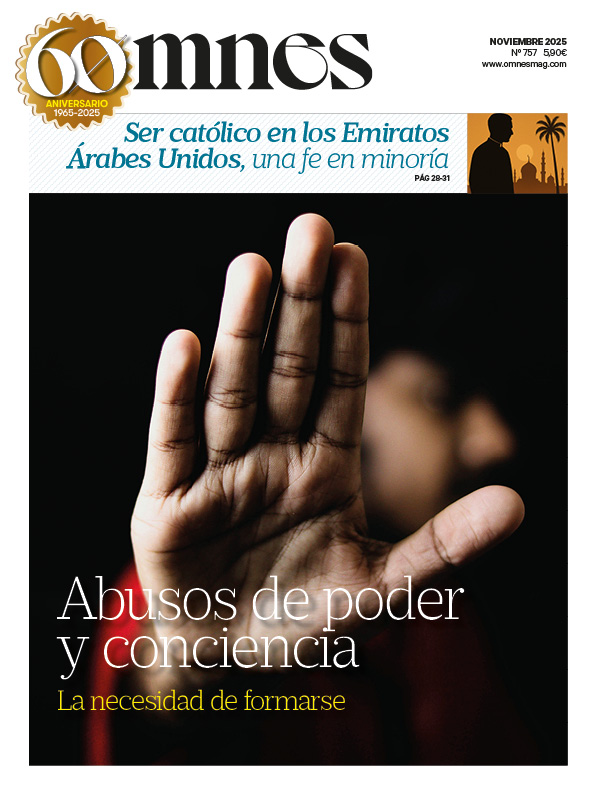Regarding the spiritual shift that seems to be evident in icons of young people in music and cinema, and in data from the Church itself, the report just released by Life Teen is interesting. It is an X-ray of today's youth, with 10 strategies for evangelization, in response to the 5 cries that it hears from young people. Its title is ‘Report on Catholic Youth 2025.’.
After 40 years accompanying parishes in the United States and more than 10 in Spain, Life Teen's mission remains the same: “to bring teenagers closer to Christ.” The intention of the report It is twofold. On the one hand, “to help parishes better understand the reality of adolescents.” On the other, “to create a culture in parishes of wanting to analyze and understand adolescents from a more global perspective.”.
In his opinion, “today's teenagers face an avalanche of pressures that have intensified with the pandemic, from the dominance of social media in their lives to depression, gender dysphoria, and political division.”.
The target audience: Generation Z and Generation Alpha
What does the report refer to as today's youth? It includes preteens, teens, and young adults who belong to ‘Generation Z’ and ‘Generation Alpha’. Generation Z encompasses those born between 1995 and 2015, while Generation Alpha includes those born after 2010. The study will show that there are frequent references to young people between the ages of 18 and 24.
For example, as a relevant piece of information from the text, “28.5 percent of young people between the ages of 18 and 24 consider themselves Catholic.” Although the report does not provide calculations, it can be estimated that in 2025 there will be around 3.5 million young people between the ages of 18 and 24 in Spain.
If 28.5% of % are considered Catholic, according to the CIS estimate in November 2024, that would represent approximately one million young people.

Technology usage data
The Life Teen report notes that “these generations are unlike any before them due to the profound influence of technology and global connectivity on their development and on how they communicate, learn, form opinions, and relate to the world around them.
As an example, consider the following data:
– Generation Z has an attention span of 8 seconds, the same as a goldfish (Time);
– watch an average of 68 videos on social media per day (Business of Apps).
Data on religion and other topics
– Forty-three percent of Catholic adolescents stop believing in God before the age of 14. And 33 percent of young Catholics between the ages of 18 and 24 say that the Eucharist plays an important role in their lives. (Footprint 2024 Study, Pontifical University of the Holy Cross).
In 2023, 1 in 3 teenagers believed in the existence of a higher power, compared to 1 in 4 in 2020 (Springtide Research).
Additional information: Forty percent of young men and 70 percent of young women experienced symptoms of anxiety or depression during 2021. This increase in emotional disorders was exacerbated by the COVID-19 pandemic (UNICEF Spain).
In 2025, the percentages are similar. They only decrease in serious cases, according to data from insurance companies that is not included in the text.
The five cries of youth
The Life Teen report highlights five critical areas that impact Catholic teens: anxiety, the need to belong, the search for purpose, the importance of family, and the fight against loneliness.
1. Managing anxiety.
The authors of the report propose building a stable community, teaching about true hope and peace, through training and meetings.
2. Sense of belonging and search for community
Thirty-eight percent of teenagers feel that their school life is unsatisfactory. What can we do? Two things, they say: Provide a sense of belonging and community through youth groups and parish activities. Show unconditional love. Catholic communities are essential.
3. Meaningful connections
Catholic education provides a framework for understanding the world and one's role in it, helping adolescents navigate the complexities of life.
4. Need for family
Family relationships are vitally important. Parents continue to have the greatest impact on the lives of adolescents. However, due to the growing prevalence of non-traditional family structures, it is suggested that teaching about the family and providing a support network in the parish community be emphasized.
5. Navigating loneliness
In 2023, teenagers spent almost 70% less time with their friends in person than in 2000. It is about building a stable community by encouraging interactions.
Strategies for Youth Evangelism
The 10 strategies for effective youth evangelism, according to Life Teen, are as follows:
1. Intentional catechesis, Designed for young people from Generations Z and Alpha.
2. Undiluted theology. That is, to deepen the teaching of Catholic theology. The text quotes Bishop Robert Barron, who stated that “Young people like to ask questions and debate the big issues (...). A disconnect occurs when we respond to intellectual questions with diluted catechesis.”.
3. Support.
The number of catechists willing to help and guide adolescents is increasing.
4. Digital evangelization. Use of digital platforms to expand the Church's reach.
5. Significant opportunities for serve.
6. Facilitates meetings with Christ.
7. Equip the “called ones.”. Comprehensive training for leaders.
8. Follow a approved formula for Generation Z.
9. Mindset of abundance, not of scarcity.
10. Accompany young people in your search for purpose.
Grab their attention or lose them. The Life Teen report proposes offering resources tailored to young people who spend an average of 4 hours and 15 minutes a day on social media and consume large amounts of short-form content at a rapid pace. These resources must be attractive and creative.








